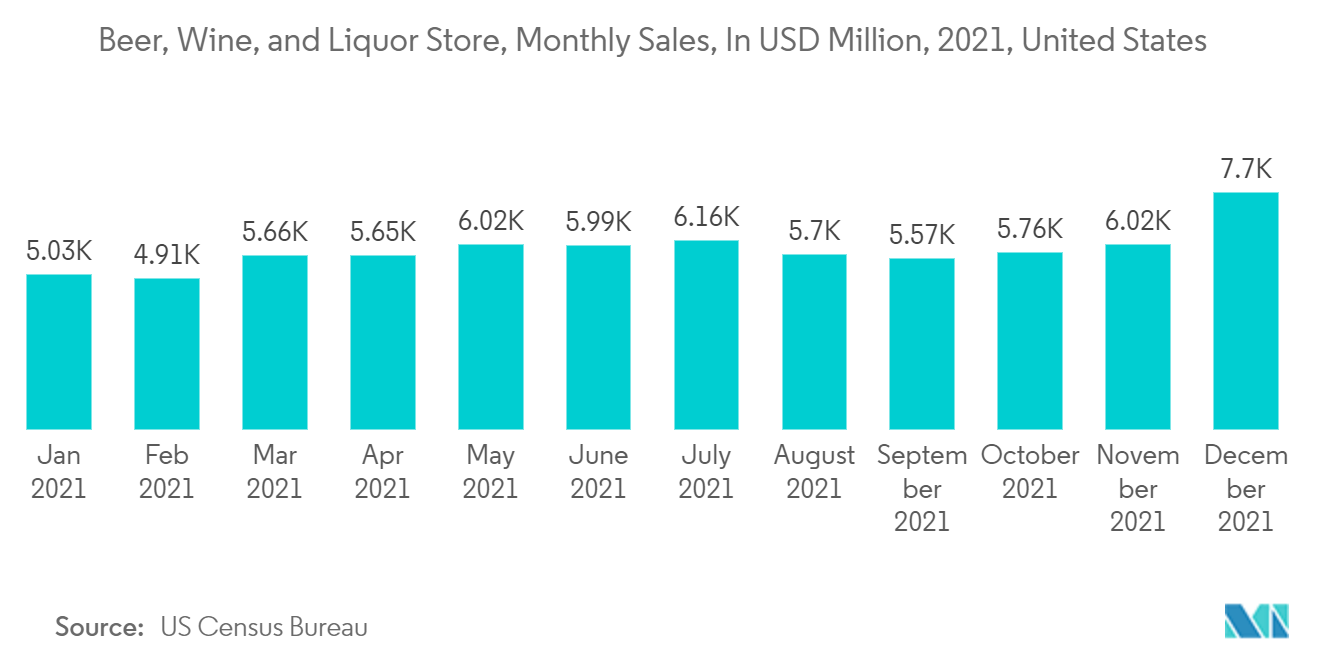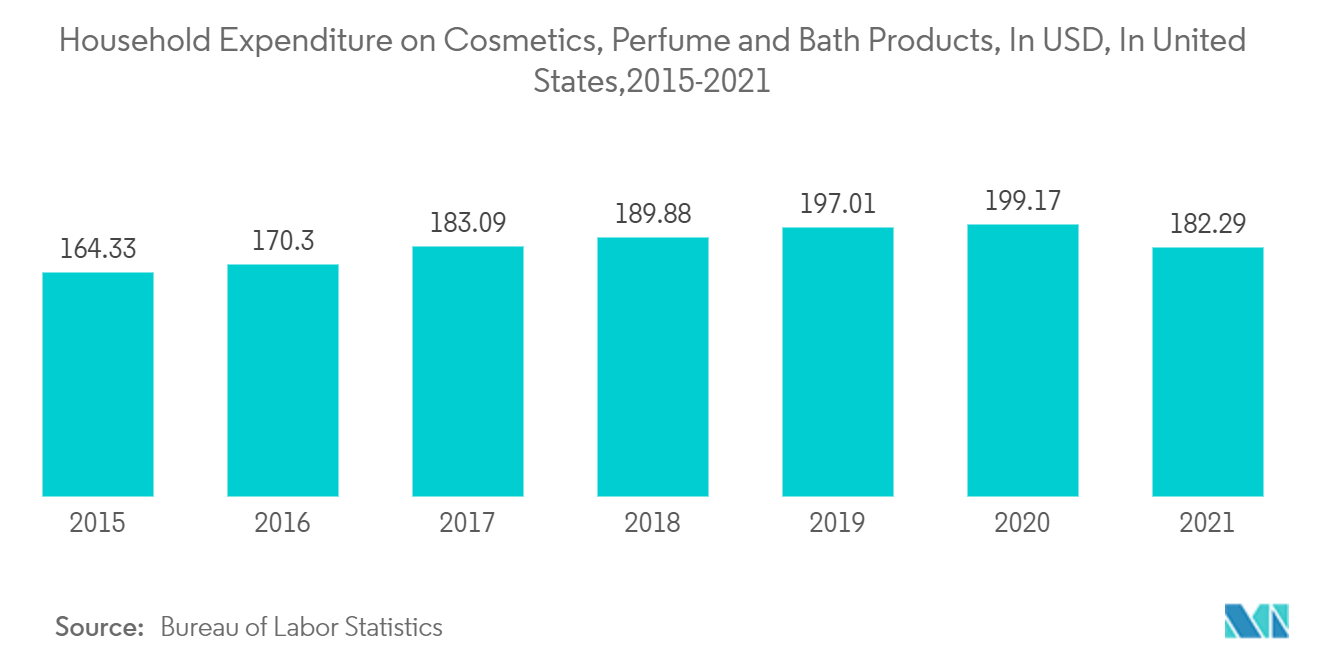Market Trends of United States Glass Packaging Industry
This section covers the major market trends shaping the US Glass Packaging Market according to our research experts:
Rising Demand from the Food and Beverage Driving the Market
- Glass is extensively preferred as a packaging material in the food and beverage sector due to its properties like neutral reacting and recycling reuse nature. It also preserves food and beverages for the long term and avoids contamination. For instance, beer is stored in dark glass bottles to avoid spoilage.
- A wide range of foods is packed in glass containers. Some include instant coffee, processed baby foods, dry mixes, spices, dairy products, sugar preserves (jams and marmalades), syrups, spreads, processed fruit, vegetables, fish and meat products, mustards, condiments, etc. Within these categories of food and drinks, the products range from dry powders and granules to liquids, some carbonated and packed under pressure, and heat sterilized products.
- Since ancient times, glass proved to be a great packaging option for the beverage industry, and this remains true today. Glass bottles provide excellent uses for the food and beverage industry by maintaining the quality of their contents and protecting the product from external factors.
- Glass is an impermeable material that keeps air and other liquids out, so glass bottles never affect the product's flavor or freshness. Additionally, external temperatures, such as heat, do not affect the material or shape of the glass, unlike plastics, which could melt and affect the product quality. Because of this, food and beverage products remain extremely fresh when packaged in glass. Glass bottles also help the packaging's internal temperature stay the same, so products do not spoil.
- Alcoholic beverages dominate the glass bottles segment in the United States. A high percentage of distilled spirits and wines are packaged using glass containers. According to U.S. Census Bureau, U.S. beer, wine, and liquor store sales last year were about USD 7.7 billion.

Personal Care Segment is Expected to Witness Significant Growth
- Plastic packaging technologies have come a long way recently, but glass dominates upscale fragrance, skincare, and personal care packaging. Most glass used for cosmetic and fragrance applications is made from natural and sustainable materials, including sand, limestone, and soda ash. Most glass packaging products are 100% recyclable and can be recycled infinitely without loss in quality and purity, from which 80% of the glass recovered is made into new glass products.
- Cosmetic containers comprise bottles, palettes, jars, as well as vials, and ampoules, among others, which are used for the packaging of skincare, haircare, nail-care, and make-up products. Cosmetic containers are available in glass containers for luxury cosmetic packaging. Glass containers containing jars and bottles are widely used in the United States due to the numerous dispensing options, including jet and drop inserts, frothing caps, spray nozzles, and pump heads.
- The factor responsible for boosting demand for cosmetic glass packaging is the growing perfume market globally, which has always been a home for glass packaging. While the sector continues to be driven by personal grooming and income-driven personal spending, key players are also focusing on introducing attractive shapes and sizes of glass bottles.
- Moreover, the market is moving toward highly innovative products, including lightweight, breakage-resistant, and intricately decorated alternatives. The cosmetic glass container market is dominated by the premium perfume segment, which currently holds a substantial percent market share and is expected to continue its pace over the next five to seven years.
- The beauty and personal care market in the United States is lucrative worldwide. Regarding purchasing behavior, American customers frequently resort to "Big-Box" retail shops, such as Walmart or Target, or pharmacy chains, such as CVS, to find their favorite products. According to the Bureau of Labor Statistics, last year, the average yearly expenditure on cosmetics, perfume, and bath preparation items in the United States was approximately USD 182.3 per consumer unit.


